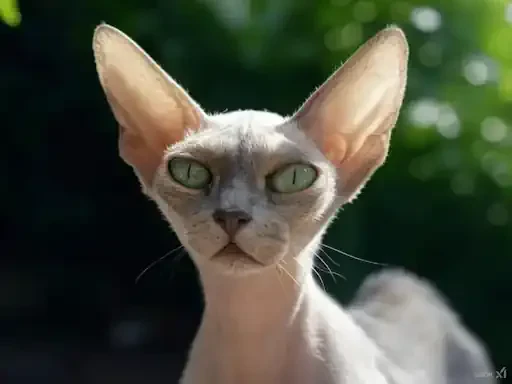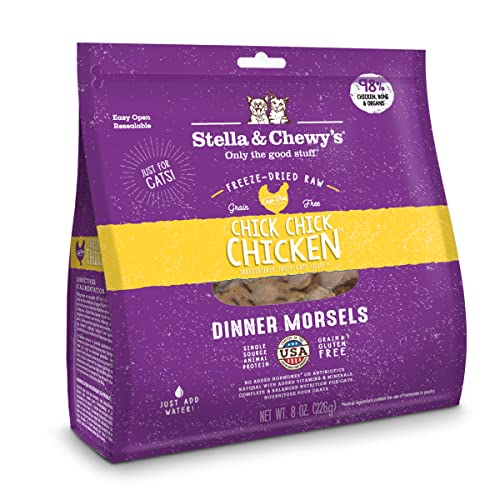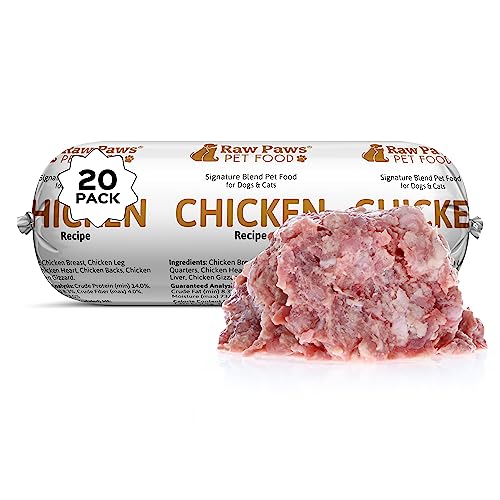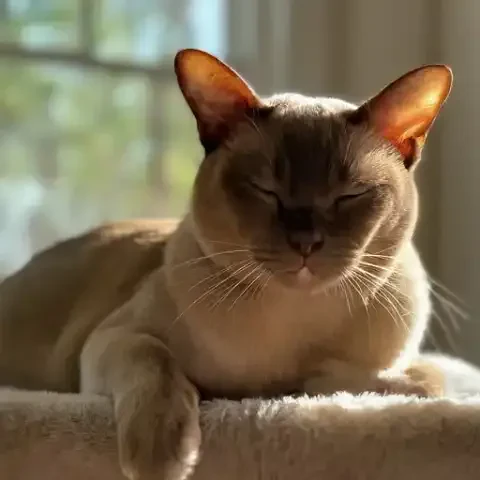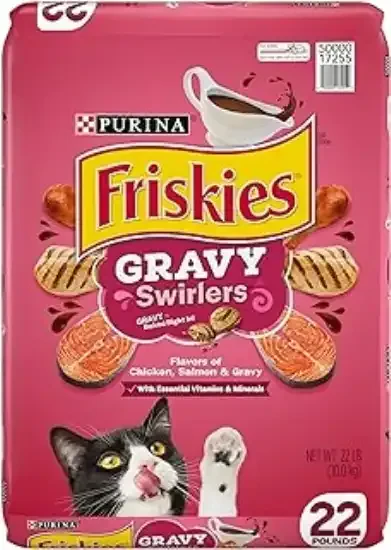Prepare to be utterly enchanted by a feline marvel, a living sculpture of elegance and affection. The Peterbald cat is not just a pet; it is an experience, a captivating blend of unique physical traits and an equally compelling personality that sets it apart in the diverse world of cat breeds. Imagine a cat whose very essence defies expectations, a creature of sleek lines and captivating warmth, renowned for its most striking feature: a coat that is barely there, or perhaps not there at all. This is the Peterbald, a breed that challenges our preconceived notions of feline beauty, inviting us to appreciate elegance in its most minimalist form. Beyond the intriguing lack of fur and the sculpted physique lies an intelligent and deeply devoted companion, a feline friend who thrives on connection and interaction. This article serves as your comprehensive exploration into the world of the Peterbald, a journey to uncover the origins, distinctive characteristics, endearing temperament, specific care requirements, and suitability as a cherished pet. Whether you're a seasoned cat enthusiast, intrigued by the allure of hairless breeds, or simply seeking a feline companion unlike any other, understanding the Peterbald is an adventure in itself, promising to reveal a breed as captivating in personality as it is in appearance. Join us as we delve into the fascinating world of the Peterbald, unveiling the secrets of this truly unique feline wonder.
To truly appreciate the Peterbald, one must first understand its most defining characteristic: its remarkable hairlessness, or more accurately, near-hairlessness. While some Peterbalds can be completely bald, giving them a distinctive "rubber bald" appearance, others exhibit a range of coat variations, from a fine, downy "flocked" coat that feels like a soft peach, to a slightly longer "velour" coat, a sparse "brush" coat with wiry, crimped hairs, and even a "straight" coat that resembles that of a typical shorthair cat. Even those Peterbalds with residual hair lack a traditional undercoat and possess a very fine, almost imperceptible layer of down. This lack of fur is not just a superficial trait; it is the defining hallmark of the breed, influencing their care needs and contributing significantly to their unique appeal. Beyond hairlessness, the Peterbald is defined by its elegant Oriental body type. This term describes a specific set of physical characteristics: a slender, elongated, and refined physique, reminiscent of breeds like the Siamese and Oriental Shorthair. Think of graceful lines and a sculpted form, a feline that is both athletic and elegant in its movements. It is crucial to distinguish the Peterbald from another well-known hairless breed: the Sphynx. While both share the trait of hairlessness, they are distinct breeds with different origins and physical characteristics. The Sphynx, while also slender, tends to be more muscular and stockier in build with a rounder face and lemon-shaped eyes. The Peterbald, in contrast, is leaner and more elongated, with a wedge-shaped head and almond-shaped eyes, embodying the classic Oriental aesthetic. The genetic basis for their hairlessness also differs. The Sphynx's hairlessness is due to a recessive gene, while the Peterbald's hairlessness is caused by a dominant gene originating from the Donskoy breed, resulting in different skin textures and degrees of hairlessness. But the Peterbald’s uniqueness extends beyond just hairlessness and body type. Other key features contribute to their distinctive appearance: long, graceful limbs that accentuate their slender build; a long, whip-like tail that tapers to a fine point; exceptionally large, pointed ears that add to their alert and expressive countenance; and captivating, almond-shaped eyes that reflect their intelligence and affectionate nature. All these traits, in combination with their varying degrees of hairlessness, contribute to the Peterbald's undeniable allure. Breed standards, established by cat registries like TICA (The International Cat Association) and WCF (World Cat Federation), meticulously define the ideal characteristics of the Peterbald, outlining the desired body type, head shape, ear size and placement, eye shape and color, tail length, and of course, the range of acceptable coat (or lack thereof) types. These standards serve as a blueprint for breeders, guiding their efforts to preserve and enhance the unique qualities that define the Peterbald, ensuring the breed maintains its distinctive identity for generations to come.
The story of the Peterbald is one of modern feline innovation, a breed deliberately crafted in the relatively recent past, in the vibrant city of St. Petersburg, Russia, in the year 1994. Unlike many ancient breeds with misty origins, the Peterbald's genesis is well-documented, a testament to purposeful breeding and a dash of serendipity. The breed's creation was not accidental, but rather a calculated experiment in combining desirable traits from two distinct breeds. Olga S. Mironova, a Russian breeder, is credited as the originator of the Peterbald. She embarked on an intentional breeding program, crossing a Donskoy cat (also known as the Don Sphynx or Don Hairless), a Russian breed known for its naturally occurring hairlessness, with an Oriental Shorthair, a breed celebrated for its elegant body type and refined features. The initial pairing was between a Donskoy cat named Radma Poliaris and an Oriental Shorthair male named World Champion Afinogen Myth. This experimental mating was not without its risks, but the outcome proved to be groundbreaking. The resulting litter contained kittens that possessed the hairlessness inherited from the Donskoy, combined with the slender, graceful body and refined features of the Oriental Shorthair. This successful blending of traits was precisely what Mironova had envisioned, giving birth to a new breed that would capture the hearts of cat enthusiasts around the world. The name "Peterbald" itself is a direct reflection of its origins and key characteristics. "Peter" is a clear nod to St. Petersburg, the city of its birth, while "Bald" directly references the breed's defining feature: hairlessness. The name is both geographically rooted and descriptively accurate, perfectly capturing the essence of this new Russian breed. Mironova's breeding goals were clear: to create a cat that combined the intriguing hairlessness of the Donskoy with the elegant Oriental body type and the affectionate, intelligent temperament characteristic of Oriental breeds. She envisioned a feline that was not only visually striking but also a devoted and engaging companion. Remarkably, the Peterbald achieved relatively rapid recognition from major cat registries. Its unique appearance and captivating personality quickly garnered attention and appreciation within the cat fancy. The World Cat Federation (WCF) was among the first to officially recognize the Peterbald, followed by other registries, including The International Cat Association (TICA), which granted Championship status to the breed in 1997, just a few short years after its inception. This swift recognition is a testament to the Peterbald's immediate appeal and the successful establishment of its distinctive characteristics. From its birthplace in Russia, the Peterbald quickly began to spread globally, captivating breeders and cat lovers across continents. Its unique combination of exotic appearance and affectionate temperament resonated with those seeking a truly special feline companion, establishing the Peterbald as a sought-after and cherished breed worldwide.
The Peterbald's physical characteristics are far more nuanced than simply "hairless." In fact, the breed exhibits a fascinating spectrum of coat variations, all centered around the theme of minimal to no fur, each with its own unique tactile and visual appeal. Understanding these coat types is key to appreciating the diversity within the breed. At one end of the spectrum is the "rubber bald" Peterbald, the most dramatically hairless type. These cats are completely bald, lacking any visible hair, and their skin has a slightly sticky, almost rubbery feel to the touch, hence the name. Moving along the spectrum, we find the "flocked" Peterbald, often considered the most common type. These cats are not truly bald but are covered in an extremely short, fine, velvety down, resembling the texture of suede or peach skin. This down is so fine it may be barely visible to the naked eye, giving the impression of hairlessness from a distance, but offers a soft, plush tactile experience. The "velour" coat type represents a slightly longer, denser version of the flocked coat, still incredibly soft, but with a slightly more noticeable downy layer. "Brush" coated Peterbalds are characterized by a sparse, wiry, and crimped coat of hair. This coat type is often wiry to the touch and may feel slightly coarse compared to the softer flocked and velour types. Interestingly, brush coats may sometimes be present in kittens but shed away as they mature into rubber bald or flocked adults. Finally, the "straight" coat type, sometimes referred to as "hair-point," is perhaps the most surprising. These Peterbalds possess a short, fine coat that closely resembles that of a typical Oriental Shorthair, appearing almost like a standard furred cat. However, they still carry the Peterbald hairless gene and may produce hairless offspring, and often have a slightly thinner coat than true Oriental Shorthairs. Regardless of coat type, Peterbald skin shares a characteristic warmth and a unique suede-like texture that is undeniably appealing. Many Peterbalds, particularly the more hairless varieties, exhibit wrinkles and folds in their skin, especially around the face, ears, and neck, adding to their distinctive and somewhat otherworldly appearance. These wrinkles are more prominent in younger cats and may smooth out slightly with age. The Peterbald body structure is equally important in defining its unique beauty. They embody the essence of the Oriental body type – elegant, slender, and muscular. Their long, graceful legs, elongated neck, and whip-like tail contribute to their overall impression of refined athleticism. Despite their slender build, Peterbalds are surprisingly muscular, possessing a toned physique beneath their delicate skin. They are fine-boned, contributing to their overall elegance and graceful movements, yet they are sturdy and agile. While considered medium-sized cats overall, their elongated body and limbs can give the impression of greater size. The Peterbald head is a striking feature, conforming to a long, narrow wedge shape. Their profile is characterized by a straight line from the tip of their nose to the forehead, with minimal to no break at the brow. Their ears are exceptionally large, pointed, and wide-set on their heads, resembling elegant triangles framing their face. These large ears contribute significantly to their alert and expressive appearance, enhancing their communication through ear movements. Their eyes are almond-shaped, slanted slightly upwards towards the ears, and intensely colored. Accepted eye colors vary but often include striking blues and greens, with color intensity being highly valued in breed standards. These expressive eyes reflect their intelligence and affectionate nature, creating a captivating gaze. The Peterbald tail is long, thin, and flexible, often described as "whip-like." It tapers gracefully to a fine point, mirroring the overall elongated lines of their body. Their paws are oval-shaped and delicate, complementing their fine-boned structure and contributing to their graceful movements. While Peterbalds lack traditional coat colors in the furred sense, their skin pigmentation exhibits a wide range of colors and patterns, mirroring the coat colors seen in furred cats. They can be found in solid skin pigmentations, tabby patterns, pointed patterns (like Siamese), bi-color patterns (with white), and a multitude of other variations, effectively translating the familiar feline coat color palette onto their unique canvas of skin. This diverse palette of skin colors and patterns ensures that each Peterbald is a truly individual work of art, a testament to the breed's captivating and varied aesthetic.
Living with a Peterbald is an exercise in affectionate companionship and engaging interaction. Their temperament is as captivating as their appearance, characterized by a delightful blend of intelligence, sociability, and a deep desire for human connection. Peterbalds are renowned for being exceptionally affectionate and social cats. They crave human interaction and thrive on companionship, often following their owners from room to room, eager to be involved in every aspect of household life. They are often described as "velcro cats," due to their tendency to stick close to their chosen humans, seeking laps to curl up in, shoulders to perch upon, and hands to be petted and admired. This intense desire for connection makes them truly devoted and loving members of the family. Their high intelligence is another defining trait. Peterbalds are quick learners, readily grasping new concepts and enjoying mental challenges. This intelligence translates into excellent trainability. They can be easily trained to walk on a leash, perform tricks, and master puzzle toys, making them highly interactive and engaging companions for owners who enjoy training and mental stimulation activities with their pets. Peterbalds are inherently curious and inquisitive, approaching the world with an open and exploring mind. They are interested in everything happening around them, wanting to investigate new objects, participate in household routines, and observe their environment with keen interest. This curiosity makes them endlessly entertaining to watch and interact with, as they constantly explore and engage with their surroundings. While playful and energetic, Peterbalds are not typically hyperactive cats. They enjoy playtime and benefit from regular exercise, but their energy levels are generally moderate and manageable. They appreciate interactive play sessions with their owners, chasing toys, batting at wands, and engaging with puzzle feeders. However, they are also content to relax and cuddle alongside their humans, striking a pleasant balance between playfulness and affectionate repose. Vocalization in Peterbalds is generally described as being moderate to low. They are not typically overly vocal cats, but they are communicative and will use soft, melodic meows and purrs to express their needs, desires, and affection. Their gentle vocalizations are rarely demanding or disruptive, contributing to their harmonious presence within the home. Peterbalds are known for their adaptability, thriving in a variety of living situations. They are generally well-suited to apartment living as long as their needs for interaction, play, and enrichment are met. They also adapt well to family life, often getting along well with children and other pets, particularly when properly socialized from a young age. Their social nature extends to other animals as well. Peterbalds often coexist peacefully with other cats and even cat-friendly dogs, particularly with gradual introductions and appropriate socialization. Their tolerant and adaptable personalities contribute to their harmonious integration into multi-pet households, adding to the joy and companionship within the animal family. In summary, the Peterbald temperament is a captivating blend of affection, intelligence, curiosity, and adaptability. They are deeply devoted companions who thrive on human connection, offering unwavering love and engaging interaction to their families, making them cherished and rewarding members of any household fortunate enough to welcome them.
Caring for a Peterbald cat involves acknowledging their unique needs, particularly those stemming from their lack of fur. While they are similar to other domestic cats in many respects, their skin requires specific attention to maintain their health and well-being. Skin care is paramount for Peterbalds. Regular bathing is essential to remove naturally occurring skin oils and prevent buildup, which can lead to skin irritation or clogged pores. Bathing frequency typically ranges from weekly to bi-weekly, but individual needs may vary depending on the cat's skin oil production. Using gentle, hypoallergenic, and fragrance-free cleansers is crucial to avoid skin irritation. Cat-specific shampoos are generally recommended to maintain the skin's natural pH balance. After bathing, moisturizing the skin is often beneficial to prevent dryness, particularly in drier climates or during winter months. Cat-safe lotions or oils, specifically formulated for feline skin, can be used sparingly, but it is always best to consult with your veterinarian for recommendations tailored to your Peterbald’s individual skin needs. Sun protection is another crucial aspect of Peterbald skin care. Their lack of fur makes them highly vulnerable to sunburn, especially in areas with intense sunlight. Indoor Peterbalds should be protected from prolonged sun exposure through windows, particularly during peak sunlight hours. Providing shaded areas and limiting direct sun exposure is advisable. For outdoor excursions, which should be limited and carefully supervised, shade is essential, and in very limited, veterinarian-approved cases, cat-safe sunscreen may be considered, but always under strict veterinary guidance. Temperature sensitivity is also a direct consequence of their hairlessness. Peterbalds are more sensitive to both cold and heat compared to furred cats. In cold weather, they can chill easily and require warm environments. Providing sweaters, warm bedding, and maintaining a comfortable indoor temperature is essential during colder months. Conversely, in hot weather, they can overheat more quickly and require cool environments. Providing shade, access to cool water, and air conditioning during hot weather is crucial to prevent heat stress. Regular ear cleaning is important for Peterbalds due to their large, open ears, which can accumulate wax and debris more readily than cats with smaller, fur-protected ears. Routine ear cleaning with a veterinarian-approved ear cleaning solution helps prevent ear infections. Nail trimming and dental care follow standard feline guidelines. Regular nail trimming every few weeks and consistent dental hygiene practices, including regular tooth brushing and veterinary dental checkups, are crucial for their overall health. Diet plays a supportive role in skin and overall health. Feeding a high-quality cat food, appropriate for their age and activity level, is essential. Some Peterbald owners opt for slightly higher calorie intake diets, as hairless cats may have a slightly faster metabolism due to the energy expended on thermoregulation. Ensuring adequate hydration is also important, as well-hydrated skin is healthier skin. Providing access to fresh water at all times and incorporating wet food into their diet can help maintain optimal hydration. Exercise and enrichment needs are similar to other intelligent and active cat breeds. Daily interactive playtime, puzzle toys, scratching posts, and vertical space are all essential to keep them mentally and physically stimulated and prevent boredom. Peterbalds are best suited to indoor lifestyles due to their temperature sensitivity, sun vulnerability, and the increased risks associated with outdoor environments for hairless breeds. Providing these specialized aspects of care – skin care, temperature management, and a stimulating indoor environment – will contribute significantly to the health, comfort, and happiness of your Peterbald companion, allowing you to fully enjoy their unique presence for years to come.
While generally considered a robust breed, Peterbald cats, like all living beings, are predisposed to certain health considerations that potential owners should be aware of. Being informed about these potential issues allows for proactive care and early detection, ensuring their long-term well-being. Peterbalds are generally considered a relatively healthy breed, particularly when sourced from responsible breeders who prioritize health and genetic diversity. Due to their relatively recent development and the outcrossing involved in their creation, they may be less prone to some of the breed-specific hereditary diseases that plague older, more inbred breeds. Hereditary conditions are relatively few in Peterbalds compared to some other breeds. However, ongoing monitoring and responsible breeding are always important to minimize any potential genetic predispositions that may emerge over time. Skin conditions, while not primary diseases, can be secondary concerns if their specialized skin care needs are neglected. Inadequate bathing, failure to moisturize, or lack of sun protection can lead to dry skin, sunburn, skin irritation, and potentially secondary skin infections, particularly in skin wrinkles and folds if not kept clean. Proactive and consistent skin care is the best preventative measure against these issues. Hypertrophic Cardiomyopathy (HCM), a heart condition affecting many cat breeds, is mentioned as a potential concern in Peterbalds as well, although it is not definitively proven to be more prevalent in this breed than others. HCM is a thickening of the heart muscle that can impair heart function. Regular veterinary checkups, including cardiac auscultation (listening to the heart), are important for early detection, and being aware of potential symptoms like lethargy or breathing difficulties is advisable. Dental issues are general feline concerns and apply to Peterbalds as well. Periodontal disease and other dental problems are common in cats of all breeds. Consistent dental care, including regular tooth brushing and veterinary dental cleanups, is essential to prevent dental disease and maintain their overall health. Routine veterinary care is the cornerstone of Peterbald health maintenance. Regular veterinary checkups, typically annually for adults and more frequently for kittens and senior cats, are crucial for preventative care, vaccinations, parasite prevention, dental cleanings, and early detection of any health issues. Peterbalds, with proper care and regular veterinary attention, typically enjoy a lifespan of 10 to 15 years or even longer, bringing years of unique companionship and affection to their families. Being informed about potential health considerations and committing to preventative and proactive veterinary care are key to ensuring a long, healthy, and happy life for your Peterbald companion.
Before welcoming a Peterbald cat into your life, it is essential to carefully consider whether this unique breed is truly the right fit for your lifestyle, capabilities, and expectations. While their captivating appearance and affectionate nature are undeniably alluring, responsible pet ownership involves a realistic assessment of compatibility and commitment. Peterbalds, with their social and adaptable personalities, can thrive in a variety of households. They are often well-suited to families, singles, and seniors alike, provided their needs for interaction and care are met. Their affectionate nature makes them wonderful companions for those seeking a close and devoted feline friend. However, owning a Peterbald is a significant time commitment. They require daily attention, interaction, playtime, and, importantly, consistent skin care. Bathing, moisturizing (if needed), and temperature management are ongoing daily or weekly responsibilities that go beyond the basic care of a furred cat. The commitment to grooming is a key factor to consider. Peterbalds are not low-maintenance in terms of grooming. Their skin requires regular bathing, and potentially moisturizing, to maintain its health and prevent dryness. This grooming commitment goes beyond simple brushing and needs to be factored into your daily or weekly routine. Temperature control in your home is another important consideration. Peterbalds are more sensitive to temperature extremes and require a comfortable and consistent indoor environment, particularly in very hot or very cold climates. Maintaining a suitable indoor temperature year-round is an essential aspect of their care. The financial aspects of Peterbald ownership also need to be considered. Beyond the initial adoption fee or breeder cost, ongoing expenses include high-quality cat food, regular veterinary care (routine checkups and potential skin-related concerns), specialized grooming supplies (gentle cleansers, moisturizers), toys, and potentially sweaters or warm bedding for colder climates. Allergies are often a consideration for potential cat owners. Peterbalds are often perceived as being less allergenic than furred cats due to their lack of shedding fur. However, it is crucial to understand that they are not truly hypoallergenic. Cat allergens are primarily produced in saliva and skin glands, not just fur. While some individuals with cat allergies may find Peterbalds more tolerable, others may still experience allergic reactions. Individual reactions vary, and spending time with a Peterbald before committing to adoption is advisable if allergies are a concern. Ethical sourcing is paramount when acquiring a Peterbald. Avoid purchasing from puppy mills, pet stores, or unethical breeders who prioritize profit over animal welfare. Instead, focus on sourcing from reputable breeders who prioritize health, temperament, and ethical breeding practices, or consider adoption from shelters or breed-specific rescues if available. Reputable breeders will be transparent about their health testing, kitten care, and breeding philosophies. Carefully considering your lifestyle, time commitment, grooming commitment, home environment, financial readiness, potential allergies, and ethical sourcing options will help you determine if a Peterbald is the right feline companion for you, ensuring a harmonious and fulfilling relationship for both you and your potential hairless wonder.
If, after careful consideration, you've concluded that a Peterbald is indeed the ideal feline companion for you, the next step is finding one to welcome into your home. Ethical sourcing is paramount, and there are primarily two avenues to consider: reputable breeders and adoption/rescue organizations. Locating reputable Peterbald breeders requires careful research and due diligence. Start by exploring breed club websites, such as The Peterbald Cat Club International (PCCI), which often maintain breeder directories and provide valuable information about the breed. Look for breeders who are registered with recognized cat registries like TICA or CFA. Reputable breeders will be transparent about their breeding practices, willingly answering your questions and providing health guarantees for their kittens. They will prioritize the health and temperament of their cats, conducting health testing and ensuring their cats live in clean, enriching environments and are well-socialized. Don't hesitate to ask breeders specific questions about health testing, coat type guarantees (if any), temperament, socialization practices, and the health history of the kitten's parents. A responsible breeder will welcome your inquiries and be eager to ensure their kittens are placed in loving and suitable homes. Visiting the cattery, if possible, allows you to observe the living conditions, meet the kittens' parents (if available), and assess the overall health and temperament of the cats firsthand. When considering adoption, keep in mind that Peterbalds, being a relatively rare breed, are less commonly found in shelters and rescues compared to more common domestic cat breeds. However, it is still worthwhile to check with local animal shelters and humane societies, as well as breed-specific rescue organizations, which may occasionally take in Peterbald cats or Peterbald mixes in need of homes. Online adoption platforms, such as Petfinder and Adopt-a-Pet, can also be valuable resources for searching for Peterbalds in rescue, though patience may be required. While dedicated Peterbald rescue groups are less common than for some more popular breeds, breed-specific rescue networks can sometimes be found through breed club websites or online searches. Adopting a Peterbald or Peterbald mix from a shelter or rescue is a rewarding option, giving a deserving cat a second chance at a loving home. Adoption fees are typically significantly lower than the price of purchasing a kitten from a breeder. The cost of a Peterbald kitten from a reputable breeder can vary depending on coat type, lineage, show potential, and location, but generally ranges from $1500 to $3000 or more, and can be higher for show-quality or very hairless individuals. Adoption fees from shelters and rescues are typically much lower, often ranging from $50 to $200, covering basic care and vaccinations. Whether you choose to acquire your Peterbald from a reputable breeder or through adoption, thorough research, patience, and a commitment to ethical sourcing are paramount. Prioritizing ethical sourcing ensures you are supporting responsible breeding practices or providing a loving home to a cat in need, ultimately contributing to the well-being of the breed and the happiness of your future unique feline companion.
In conclusion, the Peterbald cat is a truly exceptional feline breed, offering a unique blend of striking physical characteristics and an equally captivating personality. From their intriguing hairlessness, ranging from completely bald to velvety soft, to their elegant Oriental physique and intelligent, affectionate nature, they represent a departure from the ordinary, offering a distinctive and rewarding companionship experience.
